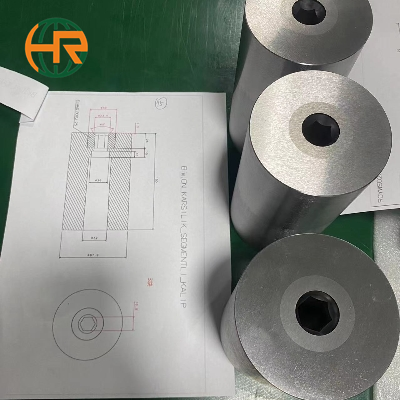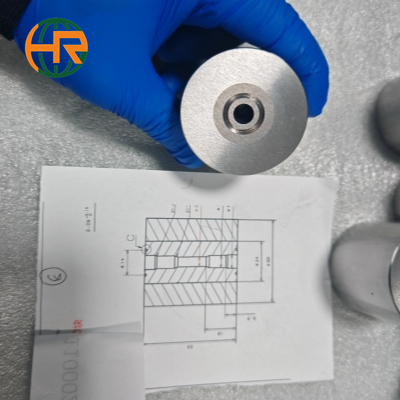-
Make a Call : +8618034073113
-
Get A Estimate : hengrui@hrcarbide.cn
Make a Call : +8618034073113
Get A Estimate : hengrui@hrcarbide.cn
1. Powder making:
• Mechanical method: crush the raw materials into powder by mechanical means.Tungsten carbide hot forging die For example, use a rolling or vibrating cylinder to drive a steel ball to impact and crush the material; it can also be driven by air flow or liquid flow to drive the raw material particles to collide and rub to form powder, which is suitable for brittle, ductile metal wires or small pieces of scraps.

• Physical and chemical method: obtain metal powder by changing the coagulation state or chemical composition of the raw materials through physical or chemical effects. For example, use a reducing agent to reduce metal oxides or salts to form metal powder; use electrolysis for metal salts, that is, pass direct current in molten salt, and the metal ions electrolytically precipitated become metal powder; there are also thermal dissociation and chemical replacement methods.
2. Mixing: Mix various required powders in a certain proportion and make them uniform to form blank powder. There are three mixing methods: dry, semi-dry and wet. The dry method is suitable for situations where the density of components is close and the uniformity of powder is not required. Tungsten carbide Dies ManufactureThe wet method requires adding a large amount of volatile liquid to the powder for ball milling, which can increase the uniformity of mixing and the contact surface between components and improve the sintering performance. The semi-dry method is to add about 0.1% of lubricating oil to the powder, which can reduce the density segregation of the powder.
3. Molding: The mixed powder is made into a compact of a certain shape and size, and the compact has a certain density and strength. The commonly used molding method is the pressing method, which is divided into room temperature pressing and heating pressing according to the molding temperature. In addition, there are non-pressure molding methods such as slurry casting, freeze casting and pressureless impregnation. Under the action of pressure, the contact surface between powder particles increases, and the convex and concave surfaces of the surface fit each other. With the help of the attraction between powder atoms and mechanical bite, the product is combined into a whole with a certain strength.
4. Sintering: This is the most critical process in powder metallurgy. The formed compact is placed in a sintering furnace and heated and kept warm at a temperature lower than the melting point of the lowest melting point component in the powder (if the sintering temperature is higher than the melting point, it is liquid phase sintering). Physical and chemical reactions such as diffusion, welding, combination, dissolution and recrystallization will occur during the sintering process. Through these reactions, the powder particles combine with each other, reducing the porosity, increasing the density of the product, and improving the strength, thereby obtaining a powder metallurgy product with the required physical and chemical properties.

5. Post-processing: According to the specific requirements of the product, the sintered powder metallurgy product is subsequently processed and processed, such as finishing, oil impregnation, machining, heat treatment and electroplating; in recent years, some new processes such as rolling and forging have also been applied to the processing of powder metallurgy materials after sintering.
العلامات :